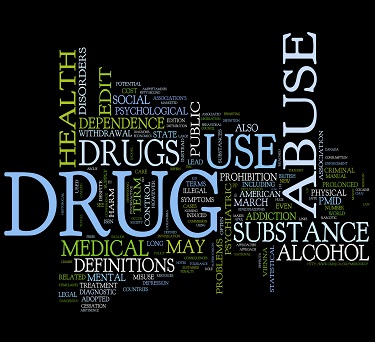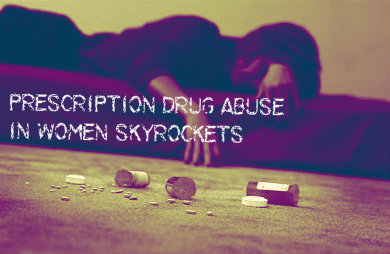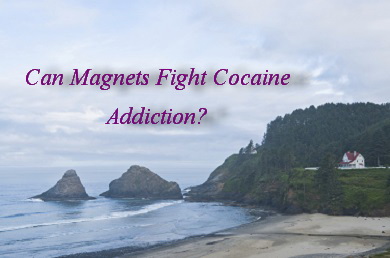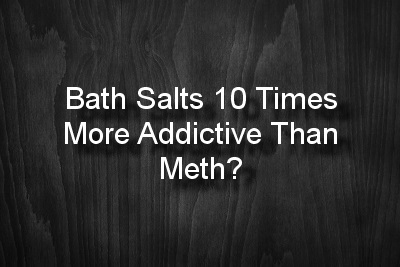Stories appear in the news on nearly a daily basis describing a trendy new drug, the explosion of a meth house, overdose deaths or some other tragic event due to drugs, alcohol and addiction. It can be hard to take away the real facts from these stories. To know what is really happening in the U.S. when it comes to drug and alcohol abuse, statistics and solid facts are helpful.
 Every year the National Survey on Drug Use and Health (NSDUH) questions a random selection of close to 70,000 Americans. All participants are 12 years and older and the purpose of the survey is to estimate how many Americans are using various illicit drugs, prescription drugs, alcohol and tobacco, and how they are using them. To get accurate data in this way helps with the implementation of preventive programs and treatment offerings for substance abusers. The study is conducted every year so that trends can be established.
Every year the National Survey on Drug Use and Health (NSDUH) questions a random selection of close to 70,000 Americans. All participants are 12 years and older and the purpose of the survey is to estimate how many Americans are using various illicit drugs, prescription drugs, alcohol and tobacco, and how they are using them. To get accurate data in this way helps with the implementation of preventive programs and treatment offerings for substance abusers. The study is conducted every year so that trends can be established.
The most recent NSDUH provides data for 2012. The latest results of the survey give a picture of drug and alcohol use in the U.S. that some may find surprising. Trends in the use of specific drugs show which are decreasing and which are exploding in popularity. The results also show trends in the ages of drug users, the prevalence of binge drinking and attitudes toward smoking.
Binge Drinking On The Rise
Binge drinking is on the rise and is considered a type of substance abuse. The Centers for Disease Control and Prevention define binge drinking as having five or more drinks within a two-hour period for men, and four or more for women. This level and rate of drinking elevates a person’s blood-alcohol content to 0.08.
According to the NSDUH data, more than half of Americans are drinking. That represents over 130 million people. Of those, one quarter, or around 60 million people, binge drink. Not only does binge drinking have serious health consequences over the long term, it can also result in immediate problems, such as drunk driving and accidents.
Spike In Heroin Use
Methamphetamine, commonly called crystal meth, speed, or just meth, is a dangerous, destructive and highly addictive drug. Not only does the drug destroy lives through addiction and health problems, the way in which much of it is made has harmed or killed people. Meth is a drug that can be made with household chemicals and drugstore buys. For this reason, a decade ago, meth labs cropped up around the country and came with poisoning fumes and accidental explosions. The good news from the survey is that use of meth is decreasing. Nearly 731,000 people used meth in 2006, and for 2012 the number dropped to 440,000.
The bad news is that use of heroin is rapidly rising. Another very serious drug, heroin is extremely addictive and has the potential to cause an overdose on the first try. The number of Americans using heroin, according to NSDUH, doubled between 2007 and 2012, from 373,000 to 669,000.
Drug Use Among Baby Boomers Is Increasing
Drug use among the baby boomer generation is on the rise. Compared to a decade ago, the number of adults between the ages of 50 and 64 using drugs doubled. Among those aged 55 to 59, the rate tripled. Americans in this age group were young during the 1960s when drug use exploded. As they age, these people are still using drugs to some extent. They are using more than the generation before them ever did.
Having accurate information from the NSDUH is crucial in developing policies, substance abuse prevention plans and treatments for addicts and abusers. The survey information provides an accurate glimpse of what Americans were doing in 2012 and also how behaviors are changing. Some of the news was good: the number of teenagers smoking cigarettes has been cut in half over the last 10 years. Some news, though, like the explosion of heroin use, is less promising.
Each year the Substance Abuse and Mental Health Services Administration (SAMHSA) conducts a National Survey on Drug Use and Health. The results of the 2012 survey have been published and coincide with the September observance of National Recovery Month.
For the most part, the report held good news showing how some worrying trends have begun to reverse. According to the 2012 study, abuse of alcohol, tobacco and even prescription drugs is on the decline.
It is helpful to compare SAMHSA studies over the past decade to get a picture of how substance use is trending among America’s youth. There was good news in terms of certain substances and no progress in either direction in terms of other substances. Here is some of what the 2012 SAMHSA report had to say:

SAMHSA Report On Prescription Drug Abuse
The news on prescription drug abuse was encouraging and showed just how effective increased awareness and minor behavioral changes can be. Just four years ago 6.4 percent of 18 to 25 year olds were abusing prescription medications each month. In 2012 that number had dropped to just 5.3 percent and figures were very similar in 2010 and 2011. Public awareness, tighter controls on medications and targeted treatments all contributed to the improved statistics in this area
Alcohol Use Trend From SAMHSA Report
The SAMHSA report also showed that rates of drinking, even heavy drinking and binge drinking, by 12 to 17 year olds were lower compared to the numbers of teens drinking in 2002 and 2009. In 2002 around 14.2 percent of teens drove while under the influence of alcohol but that figure dropped to 11.1 percent in 2011 and inched up only slightly to 11.2 percent in 2012.
SAMHSA On Tobacco Use
Tobacco use was another bright spot in the report. Just over 15 percent of teens less than 18 years old reported smoking tobacco in 2002 but that dropped precipitously to 8.6 percent in 2012.
Illegal Drug Use From SAMHSA Report
Use of illegal drugs has held pretty much steady in recent years, right at 9 percent. Marijuana has grown in popularity for nearly a decade. In 2007, 5.8 percent of teens reported using marijuana, but in 2012 that number rose to 7.3. There was a slight decline in the number of those reporting marijuana use between 2011 (7.9 percent) and 2012 (7.2 percent) but it remains the most widely used illicit drug among teens.
Rates of drug abuse and drug addiction fell from nine percent in 2002 to six percent in 2012 but there is still so much progress needing to be made. According to SAMHSA estimates, 23 million Americans needed substance abuse treatment in 2012, but only 2.5 million received specialized care. It is important to be energized by the recent successes and redouble efforts to see prevention and intervention programs become the norm.
To See More About Trends In Teen Substance Abuse – Click Here
Parents may now find more reason to monitor their teen’s use of social networking sites: Teens that see social networking pictures of their buddies partying with alcohol and tobacco are much more likely to use those substances.
 The study was conducted by a team from the University of Southern California (USC) Keck School of Medicine that questioned 1,563 sophomore students from a Los Angeles high school on two separate occasions — once in October 2010 and then again in April 2011. Researchers asked the teens about friendships they had online through social media and also about their face-to-face friendships. They asked teens how often they utilized social networking sites and which ones they tended to use. They also asked teens about whether or not they themselves ever smoked tobacco or drank alcohol.
The study was conducted by a team from the University of Southern California (USC) Keck School of Medicine that questioned 1,563 sophomore students from a Los Angeles high school on two separate occasions — once in October 2010 and then again in April 2011. Researchers asked the teens about friendships they had online through social media and also about their face-to-face friendships. They asked teens how often they utilized social networking sites and which ones they tended to use. They also asked teens about whether or not they themselves ever smoked tobacco or drank alcohol.
The USC study, which was published in the Journal of Adolescent Health, is among the first to carefully investigate the way social networking behavior affects the use of alcohol and tobacco among teens.
High School Study Participants
The student participants were equally divided between girls and boys and the average age was 15. The study population generally reflected the racial make-up of the high school with one quarter of participants being Asian and two-thirds Hispanic. Right around 50 percent of the students involved in the study said they were regular visitors to social networking sites like Facebook or MySpace.
Around 30 percent of the high school students questioned said they had smoked cigarettes and above 50 percent of them said they had tried alcohol. One-third of the students said that they had a minimum of one friend who either smoked cigarettes or drank alcohol. The baseline was important in gauging how much viewing other students’ behavior might be considered as influencing their own.
When questioned, 20 percent of the students said that they had friends who posted pictures online of smoking, drinking and partying. Another 34 percent of the students said that they had at least one friend who mentioned partying (especially drinking or smoking tobacco) in their online discussions or postings. Between October 2010 and April 2011 the student use of Facebook increased by 75 percent and use of MySpace rose by 13 percent.
Results On Teens From Alcohol Posting On Social Networks
After analyzing the data, researchers found that teens are definitely influenced by online photos of their friends’ behavior, saying it didn’t seem to matter whether a teen had many or fewer friends in their network. What did seem to matter was what kind of pictures were posted by those friends.
Even if a teen did not have close, face-to-face friendships with kids who drank or smoked, they were nevertheless at risk for being affected by more exposure to pictures of those behaviors posted online. In other words, peer pressure and peer influence definitely extends into cyberspace.
The research backed up prior findings that show a difference between users of Facebook and MySpace. Teens that were only on Facebook tended to speak more English, come from higher social strata and get better grades. They also tended to not be Hispanic and were less likely to have ever tried smoking or drinking. Users of MySpace primarily tended to drink more, and the more they used MySpace the more they tended to drink.
Since 95 percent of American teens (ages 12 to 17) are online and 80 percent stay connected through sites like Facebook, these findings are extremely relevant. It isn’t only who kids hang out with at home or on the soccer field — it matters who teens connect with online. When kids are online there are any number of friends that parents may never meet in person.
18 Sep 2013
Prescription Drug Abuse In Women Skyrockets
Deaths among women from prescription pain medications are on a steep incline, according to a recent study by the Centers for Disease Control and Prevention (CDC). The study reported that deaths among women due to prescription painkiller abuse grew five-fold from 1999 to 2000. During the same time period, deaths from prescription painkiller overdoses among men grew by 3 ½ times its previous rate. This report highlights the longstanding problem of widespread abuse of prescription pain drugs among women—a problem that has often been overlooked or minimized.
Drug abuse in general, including abuse of prescription painkillers, is often viewed as a bigger problem for men than for women. While it is true that men do make up a larger percentage of all drug abusers, prescription painkiller abuse has affected women in larger numbers for more than a century. And while there are still more yearly deaths among men from prescription drugs—including prescription painkillers—the rapid spike in deaths among women in recent years means that the gender gap is quickly closing.
Painkiller Abuse In The 19th Century
 Epidemiological reports from the 19th century estimate that women made up 65 percent to 75 percent of all individuals addicted to opium. This was often the result of self-medication, the use of unregulated “patent” medicines, or irresponsible and inappropriate prescriptions on the part of qualified physicians. In this century, women were often unnecessarily medicated even by qualified professionals due to the prevailing belief of the time that women were fragile and unable to cope with physical pain or emotional distress without assistance. Women were often treated for a vague complaint known as neurasthenia—characterized primarily by fatigue, headaches and irritability—as well as other “disorders” whose existence have now been largely discredited.
Epidemiological reports from the 19th century estimate that women made up 65 percent to 75 percent of all individuals addicted to opium. This was often the result of self-medication, the use of unregulated “patent” medicines, or irresponsible and inappropriate prescriptions on the part of qualified physicians. In this century, women were often unnecessarily medicated even by qualified professionals due to the prevailing belief of the time that women were fragile and unable to cope with physical pain or emotional distress without assistance. Women were often treated for a vague complaint known as neurasthenia—characterized primarily by fatigue, headaches and irritability—as well as other “disorders” whose existence have now been largely discredited.
Modern Drug Use Among Women
As early as the 1960s, studies have shown that women make up the majority of prescription drug users in the United States. This includes painkillers, psychoactive medications and antidepressants.
There are a variety of possible reasons for this gender imbalance. For example, modern studies have provided evidence that women experience more chronic pain than men do, or at least seek treatment for chronic pain more frequently. Women who use prescription medications report many other factors that contributed to their decision to seek treatment for physical or mental distress. These factors often include gender discrimination in work or social settings, the economic and emotional challenges of being the primary caregiver or a single parent, and societal expectations.
Studies have show that when women are prescribed pain medication, they are more likely to be given higher doses and medicated for a longer period of time than their male counterparts. One possible explanation for this phenomenon is that men remain more likely to have jobs involving manual labor with high risk of short-term injuries. In contrast, women are more likely to experience chronic pain when reaching middle age and seek treatment over a long period of time.
With a large and rapidly growing number of women taking prescription painkillers, the odds increase that a certain number of these women will develop physical dependencies. Many prescription pain medications, including Vicodin and morphine, are opioid drugs that are highly addictive.
Equal Opportunity Drug Abuse
Since as early as the 1920s, the overwhelming majority of drug users among men have been from minority populations and economically disadvantaged backgrounds. In contrast, prescription drug abuse among women has always affected a much more varied population, from the wealthy to the working classes. Although white and Native American populations have the highest numbers of deaths from prescription painkillers, the problem is by no means unique to those demographic groups.
While women who abuse prescription painkillers do not come from one predominant economic situation or ethnicity, there is a strong trend apparent when it comes to age. The rate of deaths from prescription painkillers more than tripled among women ages 45 through 54, and also tripled for women ages 55 through 64. In the year 2010, middle-aged women in these age groups made up almost half of the overall deaths among women from drug overdoses.
27 Aug 2013
Can Magnets Fight Cocaine Addiction?
Cocaine addiction is one of the toughest illnesses to treat. Although scientists do not yet understand the entire mechanism of addiction, it is believed that the brain’s pleasure center plays a major role in the disease. Pleasure center cells appear in the prefrontal cortex and have long been thought to be responsible for impulse control. In fact, it is believed that a low level of activity in the prefrontal cortex is one characteristic of an addict.
The method used to treat cocaine addiction has traditionally been a combination of abstinence and psychotherapy or behavioral therapy. Given how strong cocaine addiction can be, however, many people do not stay in recovery permanently. In fact, it can take several cycles of drug rehab to finally be free of the relentless cravings. By this point, many cocaine addicts have suffered from the consequences of prolonged addiction such as organ damage, social issues, family problems, financial disaster and job loss.
Prefrontal Cortex Activity and Cocaine Addiction
 There is new hope for people suffering from cocaine addiction and it comes in the form of a potential cure, not just remission. Researchers at the National Institutes of Health (NIH) and the University of California at San Francisco have been able to eradicate cocaine addiction in rats by focusing beams of laser light into their brain matter.
There is new hope for people suffering from cocaine addiction and it comes in the form of a potential cure, not just remission. Researchers at the National Institutes of Health (NIH) and the University of California at San Francisco have been able to eradicate cocaine addiction in rats by focusing beams of laser light into their brain matter.
The scientists used genetic engineering to place rhodopsins (proteins that react to light) directly into the rats’ brain cells at the prefrontal cortex. When light is introduced, those particular cells will fire. The rats were then administered enough cocaine to develop a bona fide addiction, the hallmark of which is engaging in behavior that will result in the administration of more cocaine.
Using fiber optic cabling implanted in the tiny brains, the researchers were able to direct laser beams onto the brain cells that contained the rhodopsins. Once these prefrontal cortex neurons were activated, the subject immediately stopped all cocaine-seeking behavior. When the light was extinguished, the rats resumed behavior associated with addiction.
Although this is great news for those engaged in addiction research, the practical implications are less clear. At issue is the ability to activate prefrontal cortex neurons in human beings on a continuous basis without affecting activities of daily life. Although it is certainly possible to carry out surgical experiments similar to those undertaken by the NIH, invasive brain surgery is not something we would consider as a long-term treatment method.
Transcranial Magnetic Stimulation for Cocaine Addiction
Thankfully, scientists are already researching ways to activate prefrontal cortex neurons in cocaine addicts’ brains without using a scalpel. Transcranial magnetic stimulation (TMS) involves using a magnetic field on top of the scalp to influence behavior of the cells below the skull. This non-invasive and completely pain free process uses a coil to focus the magnetic field onto particular areas and patients experience nothing more serious than the feeling of being tapped on the head. In order to activate the cells, a high-frequency pulse is used.
The NIH plans to begin human trials of the treatment soon and hopes to show that TMS can activate prefrontal cortex neurons as effectively as the laser-light method. It remains unclear whether the relief achieved will be only temporary and, thus, require indefinite treatments. In any event, TMS may provide craving relief long enough to allow more traditional methods of cocaine addiction treatment to take hold.
Of all of the recent designer drugs that have hit the market, few have attracted the level of attention as bath salts. The drugs were initially blamed for the zombie-like, cannibalistic attack in Florida last year, but it was later found that marijuana was the only drug in the attacker’s system. Regardless, the addictiveness of bath salts and the risks associated with their use have become more well-known, leading to a U.S. ban of many of the drugs. Their potency, however, has meant that many users still take them and expose themselves to these risks. They might not turn users into cannibals, but new research suggests that the drugs are actually much more addictive than methamphetamines.
What Are Bath Salts?
They definitely aren’t chemicals you use when you take a bath—they’re just marketed as such in order to make legal punishment more difficult to rain down on the producers. Bath salts are essentially stimulant drugs that have comparable effects to amphetamines and MDMA. In essence, there are several different types of bath salts, and they can be more accurately described as synthetic cathinone compounds—like the active substance in the drug khat. You can’t really know which chemicals are in the substance you’re taking.
There are many risks associated with the drug, with reports of chest pain, rapid heartbeat, aggressive behavior, hallucinations, delusions, paranoia and high blood pressure. Studies on the substances are limited, however, because they’re relatively new, and it’s merely assumed that the long-term effects are comparable to those of methamphetamines because of the chemical similarities. In 2012, there were more than 2,600 calls to poison control centers about exposure to bath salts.
Studies on the substances are limited, however, because they’re relatively new, and it’s merely assumed that the long-term effects are comparable to those of methamphetamines because of the chemical similarities. In 2012, there were more than 2,600 calls to poison control centers about exposure to bath salts.
The Study
These issues (and the relative scarcity of studies addressing the drugs) led some researchers to look at one specific cathinone compound, 3, 4-methylenedioxypyrovalerone—or simply MDPV. The researchers used rats—which have similar neurological “reward” pathways to humans and are therefore useful for studying addiction—that had been trained to press a lever for a reward. They initially received food for their lever-presses, but the researchers had them hooked up to an intravenous infusion of drugs, which became activated for the study period. The rats received MDPV or methamphetamine, with the aim of investigating the differing effects of both drugs.
The Findings
The most shocking result from the research is the finding that the rats who were hooked up to the MDPV pressed the lever for a dose significantly more often than those who had methamphetamine. The researchers point out that the number of lever-presses is analogous to the amount of effort the rats are willing to put in to get a dose of the drug. The rats pressed the lever an average of 60 times to get access to meth, whereas for MDPV the number was 10 times higher, at an average of 600 presses. The results seem to show that bath salts are exponentially more addictive than methamphetamine, with some rats pressing the lever up to 3,000 times for a single dose.
Additionally, the researchers also looked at the repetitive behaviors that are common in humans who take bath salts. They found that the rats receiving higher doses of MDPV displayed many similar behaviors, such as excessive licking, skin-picking and teeth-grinding. The researchers reported that some of the MDPV-dosed rats were so intent on licking the transparent walls of their cages that they were unable to interrupt them.
Conclusion
These findings serve as evidence that bath salts could be notably more addictive than meth, according to the researchers, and they concluded that the potency of the drug means that it’s likely to stick around despite its now illegal status. In other words, the study suggests that bath salts are so addictive that they may join the ranks of commonly abused illegal drugs, rather than being replaced by another temporarily legal designer drug.
Of course, the major problem when it comes to bath salts is in the wide variety of substances and the fact that long-term studies are currently unavailable. The researchers are moving on to both of these areas for future studies and plan to investigate the long-term behavioral impacts of bath salt abuse and the different effects of the newly produced cathinone drugs. The story comes as a stark reminder that legality doesn’t equal safety when it comes to drugs—in fact, the changes made to their chemical structures in order to skirt existing legislation could make them even more dangerous. Bath salts are particularly susceptible to this, because there isn’t one “formula” for the drug—one batch could be drastically, fatally different from another and the user would have no way of knowing.
Prescription drug addiction—especially to opiate painkiller medicines like fentanyl—is killing Americans in alarming numbers. In 2010, more than 12 million Americans reported using a prescription painkiller non-medically, and the rates of overdose deaths have more than tripled since 1990. Painkillers are responsible for more deaths than heroin and cocaine combined—so the legitimately prescribed medicines sitting in your cabinet currently pose a bigger public health risk than the illicit narcotics found on street corners.
Since drug addiction is a disease that does significant damage to the health and lives of those affected, many people would like to believe that their insurance provider will look out for them if they spiral into self-destruction. A new report reveals, however, that this is far from the truth. In reality, insurers place numerous restrictions on those seeking medicines that have been shown to help people struggling with opiate addiction.
The Epidemic of Prescription Painkiller Abuse
More and more people are becoming aware of the risks of prescription painkiller abuse, but the death rates still paint a shocking picture of the state of pain management in the U.S. The main issue is that we’re still dependent on opiate medicines (which bear close chemical similarities to illicit drugs such as heroin) and these have a significant risk of addiction and also a notable potential for overdose. Taking too much of a prescription painkiller can produce euphoria. As a result, many people who are prescribed these medication s find themselves regularly exceeding the recommended dosage from their doctor. According to the CDC, sales of prescription painkillers like Vicodin, OxyContin, Percocet and Duragesic have increased by 300 percent since 1999, providing a startling parallel to the rates of overdose death.
s find themselves regularly exceeding the recommended dosage from their doctor. According to the CDC, sales of prescription painkillers like Vicodin, OxyContin, Percocet and Duragesic have increased by 300 percent since 1999, providing a startling parallel to the rates of overdose death.
The key point is that drug addiction is a chronic, relapsing disease just like asthma and diabetes, and users (while they may have chosen to take the substance initially) quickly lose control over their behavior and are unable to stop taking the drugs. Their brains have adjusted to the continuous supply of opiates, so that without them they’re left unbalanced and can experience unpleasant withdrawal symptoms. This means that patients experiencing chronic pain are given medicines that can easily lead them into addiction—even if they have a legitimate reason for taking large doses of the medicine. Just like asthmatics can’t choose to re-open their airways and diabetics can’t increase their insulin levels through sheer willpower, those struggling with addiction can’t just stop craving drugs.
Treatment Is Available
This is why, alongside psychological interventions, drugs such as methadone, buprenorphine and naloxone have been developed to help people struggling with opiate addictions. While methadone and buprenorphine are used to help users gradually decrease their opiate consumption, naloxone is used specifically to counter the effects of an overdose. The key point here is that medicine that could help with the epidemic is available; it isn’t that the medicine doesn’t work or hasn’t been invented.
Insurer Restrictions
It is clear that while opiate painkiller abuse is one of the most significant causes of death in the U.S. today, a mixture of psychological and pharmacological interventions can be used to treat anybody affected. The only problem is that they often aren’t being used and the paper from the Avisa Group—which was commissioned by the American Society of Addiction Medicine—reveals the reasons in undeniable detail.
Firstly, it shows that rural or especially poor areas have higher rates of overdose from prescription medicines, and that Medicaid users are also at an increased risk. The Affordable Care Act, due to come into effect in January, will dramatically increase the numbers of drug-addicted Americans enrolled with Medicaid and other health insurance plans. This sounds like a good thing, but the benefits are limited when you consider the wide range of restrictions placed by providers on the users of medicines like methadone, buprenorphine and naloxone.
The list of restrictions is unfortunately long and inevitably causes a great deal of harm by making it harder to access potentially life-saving medicines. Some medicines aren’t covered by specific insurers or state Medicaid programs, there are limits on the dosages allowed (which don’t always allow for the recommended dosage of the medicine), unrealistic limits on refills and limits on the amount of medicines such as buprenorphine and methadone that you can be prescribed over the course of your lifetime (which are unheard of for other medicines).
Perhaps most shockingly, the insurance companies require authorization and re-authorization processes to be completed, which become more complex the more times a patient has to complete them. These include things like the requirement of counseling before authorization is granted, and this often also involves the insurance companies demanding the counselor’s treatment notes and the patient’s attendance records before making a decision. In many cases, cheaper treatments (which are considerably less likely to be effective) must be tried before authorization is granted, and the entire process can take several days or even weeks. During this time, it’s inevitable that some drug abusers relapse, overdose and die as a result.
Still Fighting Stigma?
The fact that such restrictions don’t exist for other medicines is the worst point revealed by this report, because it essentially shows that addiction is still being stigmatized. How you can morally justify imposing a lifetime restriction on treatment for somebody suffering from a chronic condition is completely beyond comprehension. Nobody would tell a diabetic that they’ve used up their lifetime supply of insulin, yet it’s commonplace for drug users to be told the equivalent. It reflects a deep-seated assumption that drug addiction is somehow a “choice,” and this assumption must be shattered if we’re ever to reduce the public health impact of prescription painkiller addiction.
The war on drugs is failing, according to the Government Accountability Office (GAO). In 2009, more people died as a result of drug use than from all traffic accidents combined. And despite the fact that over $1 trillion has been spent since 1971 trying to deter people from illegal substance use, not much has changed.


